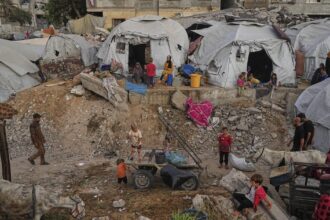In an era where climate solutions are desperately needed, a groundbreaking global mapping initiative has identified the world’s most promising reforestation zones—areas that could dramatically accelerate carbon capture while restoring crucial ecosystems. The comprehensive study, released yesterday by the International Forest Restoration Institute, represents the most detailed assessment yet of where tree-planting efforts would yield maximum climate benefits with minimal ecological disruption.
“We’ve essentially created a roadmap for the most efficient global reforestation strategy possible,” explains Dr. Elena Vasquez, lead researcher on the project. “These aren’t just potential planting zones—they’re opportunity landscapes where forest restoration could provide multiple layers of environmental benefits while helping communities adapt to changing climate conditions.”
The maps, developed using advanced satellite imaging and machine learning algorithms, reveal approximately 1.7 billion hectares of degraded land across six continents that could support new forest growth. Particularly promising regions include portions of Brazil’s Atlantic Forest, Southeast Asia’s lower mountain ranges, and surprisingly large swaths of eastern North America where abandoned agricultural land could be reclaimed.
What distinguishes these new maps from previous efforts is their unprecedented resolution and integration of multiple data layers. Beyond simply identifying suitable growing conditions, researchers incorporated biodiversity corridors, watershed protection zones, and proximity to human settlements to prioritize areas where reforestation would deliver cascading environmental benefits.
According to the CO24 News climate desk analysis, if fully utilized, these target zones could sequester an estimated 205 gigatons of carbon dioxide—equivalent to nearly five years of global emissions at current rates. However, experts caution that reforestation alone cannot substitute for aggressive emission reductions.
“This isn’t a license to continue burning fossil fuels,” warns Professor Thomas Chen of the University of British Columbia’s Climate Action Laboratory. “Even with ambitious reforestation, we’re still looking at catastrophic warming unless we rapidly decarbonize the global economy.”
The maps have drawn attention from policymakers, particularly as nations struggle to meet their Paris Agreement commitments. Canadian Environment Minister Sarah Richardson confirmed to CO24 Canada that the government is examining the findings to inform its national climate strategy, which already includes a pledge to plant two billion trees by 2030.
“What’s truly valuable about this research is that it helps us target our investments where they’ll have maximum impact,” Richardson said. “Every dollar spent on reforestation needs to deliver real climate benefits.”
The research also highlights important limitations to tree-planting initiatives. Several regions previously targeted for massive reforestation projects, particularly in arid grassland ecosystems, were intentionally excluded from the opportunity maps. These ecosystems, the researchers noted, evolved without extensive tree cover, and artificial afforestation could actually reduce biodiversity and disrupt natural carbon cycles.
“We’ve learned from past mistakes,” says Dr. Vasquez. “Planting the wrong trees in the wrong places can do more harm than good. These maps are designed to prevent ecological missteps while accelerating beneficial restoration.”
International climate finance organizations have already expressed interest in using the maps to guide billions in conservation funding. The Green Climate Fund announced it would incorporate the data into its forest protection grant criteria beginning next quarter.
For average citizens wondering how to contribute to reforestation efforts, the research team has developed a companion website where users can explore local restoration opportunities and connect with legitimate planting initiatives in high-priority zones.
As CO24 World climate correspondents have reported throughout the year, forest protection and restoration represent one of the few “shovel-ready” climate solutions that can be deployed immediately while technological alternatives continue developing.
As global temperatures continue rising and ecosystems face mounting pressures, the question becomes not whether we should restore forests, but how quickly we can mobilize resources to the right locations. With these new maps in hand, do we have the political will to transform opportunity into action before these potential forests—and their climate benefits—are lost forever?










